Let’s talk joining…
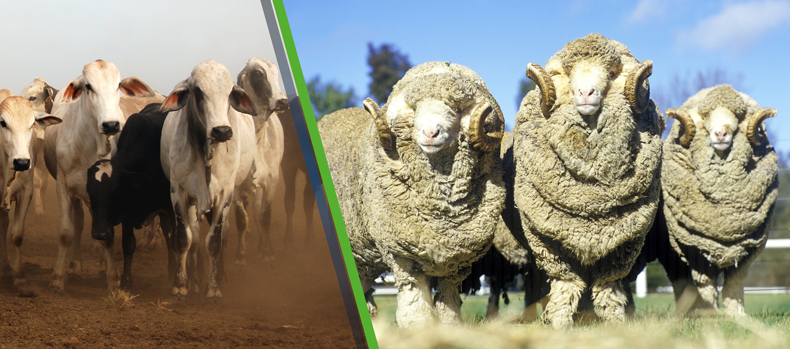
The feel this month from farmers has been very reflective. With joining done in some parts of Australia and yet to happen in others, it is a patient wait to see if all of the hard work will be returned in healthy conception rates for both sheep and cattle breeders.
With so many varying factors along the way I have still come across a number of farmers who are quietly confident in their practices, which makes the waiting game a little easier.
A common question that I get asked is “how did my neighbour get better percentages?” the feedback is generally consistent around these areas;
• Targeting ideal condition scores
• Feed efficiency / positive energy balance
• Pinpointing deficiencies affecting fertility
• Not forgetting the boys
Printer Friendly Version
Condition Score for Joining
If you have done the “Lifetime Ewe Management” or “Heifers for Profit” courses, or you intuitively focus on the condition scoring of your ewes and cows then it is fair to say you have a proactive approach to understanding and improving the fertility and profitability of your breeding stock.
Research used to develop these courses has shown a higher condition score (CS) at joining results in higher conception rates in both sheep and cattle.
Joining at CS 3 has been shown to minimise dry rates in Merino’s to no more than 10% and 5% in Crossbred ewes (Lifetime Wool, 2011). In dry times it can be challenging to get your ewes and cows in a higher CS to increase conception rates, particularly when feed is costly and maintaining ground cover in your paddocks is important.
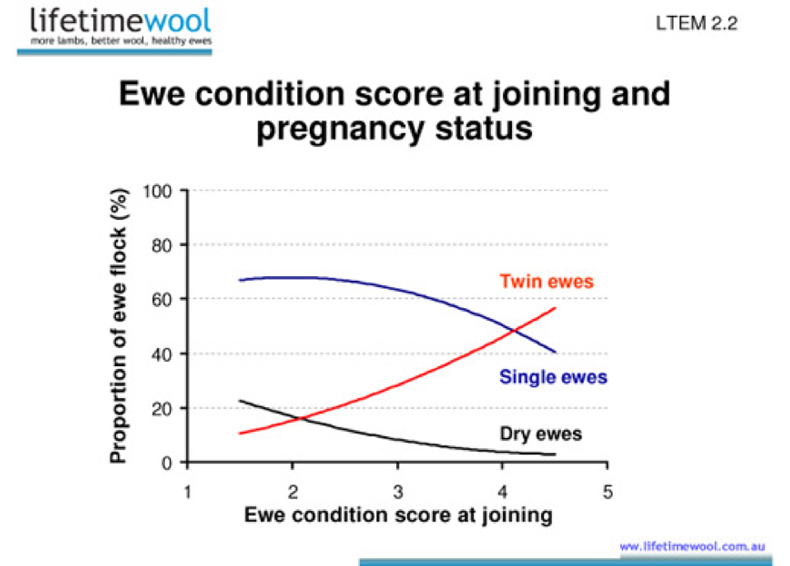
Managing CS is important in dry times, feeding animals to achieve higher Condition Scores such as CS 4 and over can be wasting costly feed, especially in cattle as it doesn’t translate to higher twin rates like in sheep.
Whereas, cows under CS 2.7 will have a lengthened anoestrus period and maiden ewes will struggle to conceive on their first joining. Increasing body condition in light animals means much more feed than it would have been to maintain them in the first place.
The challenge is maintaining the ideal CS as cost effectively as possible, that’s where Feed efficiency is key. Please see Tables 1 & 2 below outlining what each CS looks like in sheep and cattle.
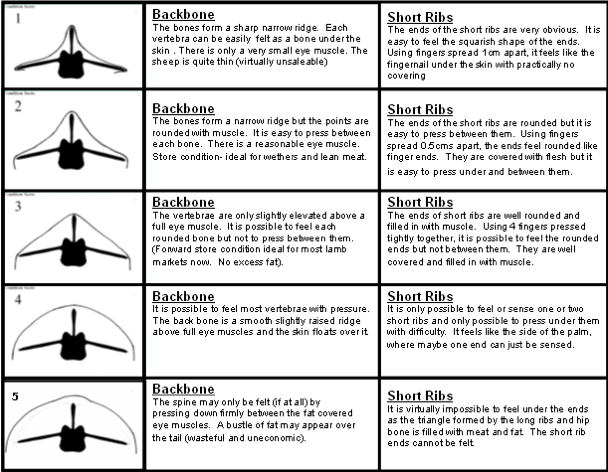
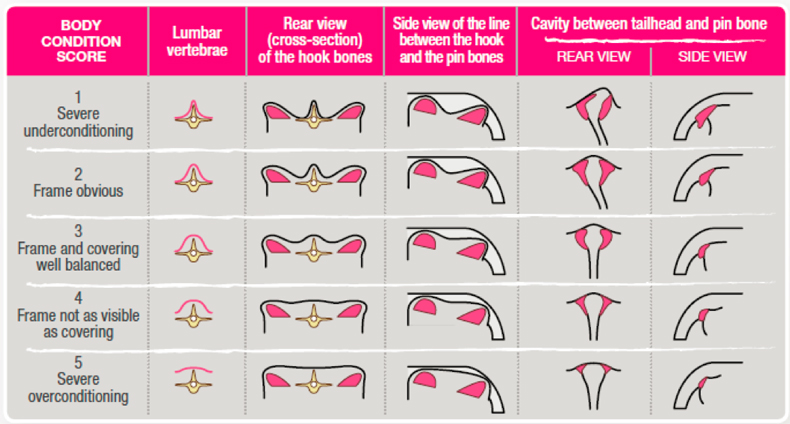
Positive Energy Balance
Leading into the summer months sheep and cattle will be consuming dry feed that’s declining in quality. At least 1 cycle out from joining, ewes and cows should be on a rising plane of nutrition. This means an increase in quality and/or quantity of feed available.
Given the declining quality of pasture the season is working against having a positive energy balance. As pasture hays off the Neutral Detergent Fibre (NDF) rises, reducing the overall digestibility of the pasture, energy availability and the quantity livestock can eat. Please see Figure 2 below.
By utilising products like Beachport’s White Cap 1 month prior to joining for females and 2 months prior for sires, you can have a positive influence on energy availability. White Cap supplies key amino acids, and major and trace elements to improve feed efficiency and absorption. As our products are supplying amino acids via seagrass and kelp extracts it is still safe to use in conjunction with other dry feed supplements.
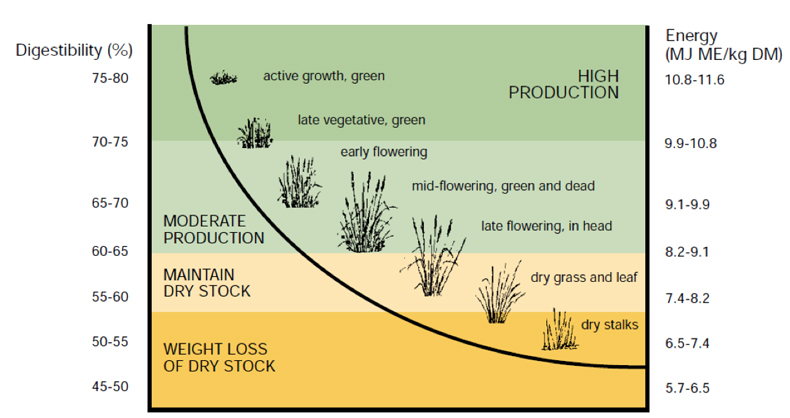
Deficiencies crippling fertility
Phosphorus deficiency has been proven to reduce appetite in livestock and reduce fertility. Reduced appetite has a flow on effect on maintaining the CS of livestock, if they are not consuming enough feed to meet their daily energy requirements, they will continue to lose body condition.
Phosphorus deficiency also plays a role in energy metabolism and utilisation, making it an important macro in dry times to improve feed efficiency. Leading into the wet season, now is the best time to increase P intake via supplementation of White Cap to improve conception rates.
Selenium deficiency can also reduce fertility in sheep and cattle. When selenium is added to the diet, it can be attributed to the reduction in embryonic loss in the first month of gestation (Mehdi & Dufrasne, 2016). It can also reduce sperm motility by altering testosterone synthesis, causing infertility in males (Mehdi & Dufrasne, 2016).
Iodine and Manganese are trace elements usually forgotten about when discussing deficiencies. However, both are important because they cause irregularities and depression of cycling and low conception rates (National Academies of Sciences, 2016).
Did you know Seagrass contains Iodine naturally? A benefit to using White Cap is it contains 12 key major and trace elements in one simple and easy to use product. Enhancing the mineral status of your livestock at key times to improve sperm quality, egg quality, cycling and conception rates.
” If the availability of these essential elements is missing, then the egg quality of the donors will be compromised. So, the question is….
how do we ensure that donors are receiving adequate supply of these elements?
ART has used Beachport Liquid Minerals for several years at our Rockhampton donor facility with great success. Typically, many of the donors we receive come without sufficient backgrounding. Upon arrival at our donor centre all donors receive the prescribed amount of BLM. Within the first month we notice a significant increase in the egg number and quality. Further supplementation is repeated for all donors every 6 weeks to keep them in top performance. Additionally, stress has a big impact on the success of the ET program, especially, right at the point of embryo transfer. Fortunately, BLM also supplies a product that has a calming effect on recipients. This product incorporated into an ET program can lift pregnancy rates by up to 15%. Finally, when the job is done, and clients take their valuable donors home, they all comment on how well their cattle look.
They see the difference on the outside…. I see the difference on the inside.”
– Simon Walton, CEO July 2016 – Australian Reproductive Technologies
Wandal, QLD
Yeah, the boys!
Many producers are focussed on the ewes or cow’s preparation; rightly so! However, the rams and bulls are usually forgotten about until a couple of weeks before joining and they’re 50% of the puzzle. It takes approximately 6-8 weeks for spermatogenesis to occur, meaning for a ram or bull to produce fully motile sperm that’s able to fertilise an egg. Therefore, 2 months prior to get them in and give them the once over, focussing on the following –
• The 5 T’s; Teeth, Toes, Tossle, Torso & Testicles, ensuring everything is in working order
• Administer animal health treatments such as vaccinations, drench, fly protection, etc
• Condition score and adjust feeding strategy accordingly, CS will affect their performance too!
It’s important to remember to avoid significant stress within 2 months of joining such as shearing, crutching, etc because stress can reduce ram and bull sperm quality. Also avoid sudden changes in feed. If ewes or cows are being supplementary fed, begin introducing the same ration to the rams and bulls. This is especially important when feeding starch-based grains to avoid grain poisoning/acidosis.
White Cap
White Cap is a 3 in 1 liquid supplement derived from seagrass and kelp containing naturally occurring amino acids, fulvic acid and chelated major and trace elements, particularly Phosphorus. Fulvic acid is a natural electrolyte that improves absorption, availability and retention of the nutrients in our product. The powerful ability of fulvic acid to bond, dissolve and transport nutrients into cells, acting like an injection, makes it last up to 6 weeks in the animal’s system. The simplicity of dosing cattle once every 4-6 weeks, rather than daily dosing saves you time and money. BLM White Cap is also available in our organic range.
Administering White Cap regularly boosts a cattle’s reserves of major and trace elements including phosphorus, selenium, copper, cobalt and others to improve production. It also enhances feed conversion by providing amino and fulvic acids in the dry, when the availability of protein in feed is limited. These two important components of our product enable cattle to maintain condition scores, improves fertility and weaning rates leading up to the wet season.
Please click the links below for further information:
– White Cap
– Organic White Cap
– Find your nearest stockist
Get in touch with our team.
References
Figure 1: Lifetime Wool Ewe Condition Score at Joining and Pregnancy Status http://www.lifetimewool.com.au/Ewe%20Management/conception.aspx
Figure 2: MLA 2.07 – Field Based Pasture Measurements https://mbfp.mla.com.au/pasture-growth/tool-27-field-based-pasture-measurements/
Lifetime Wool, 2011. Ewes in better condition at joining conceive more lambs. http://www.lifetimewool.com.au/Ewe%20Management/conception.aspx
Mehdi, Y. Dufrasne, I. 2016. Selenium in Cattle; A Review. MDPI; 21(4): 545.
MLA 2.07 – Field Based Pasture Measurements Picture https://mbfp.mla.com.au/pasture-growth/tool-27-field-based-pasture-measurements/
National Academies of Sciences, Engineering and Medicine. 2016. Nutrient Requirments of Beef Cattle, Eighth Revised Edition. Washington DC: The National Academies Press.
Table 1: Lifetime wool Ewe Condition Scores http://www.lifetimewool.com.au/conditionscore.aspx
Table 2: Ketolution Cow Condition Scores https://www.ketolution.com/en/bcs-body-condition-scoring/
